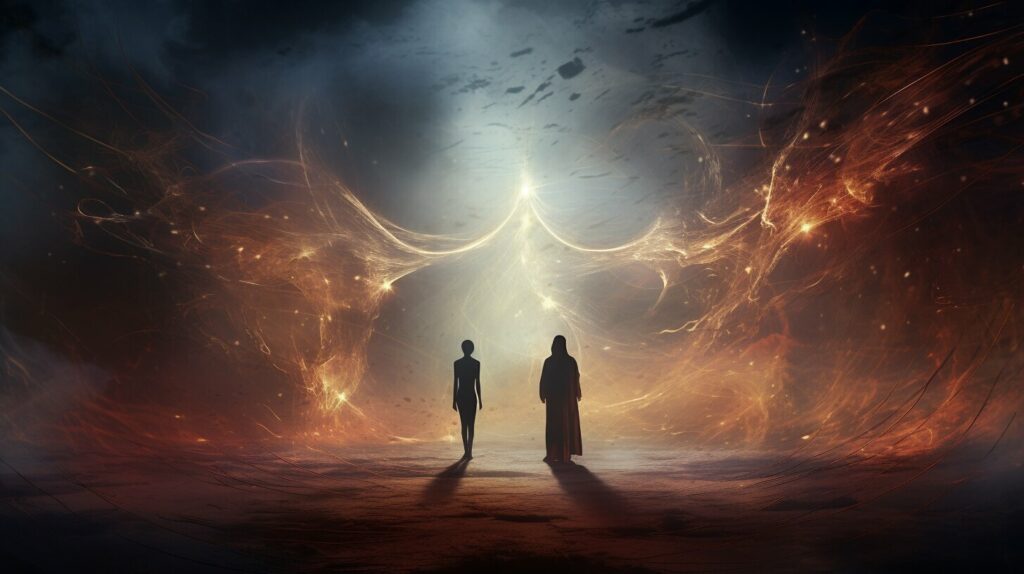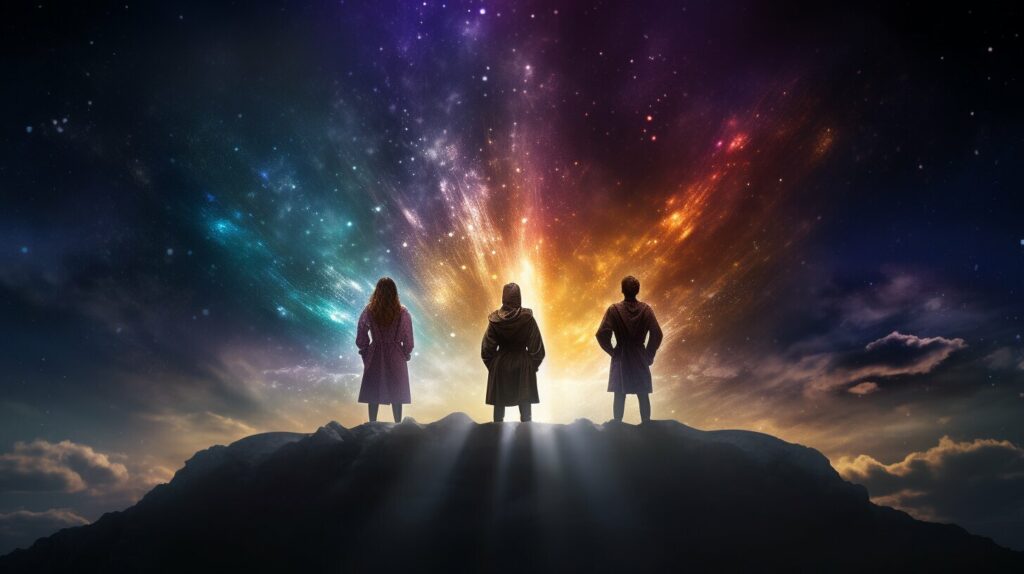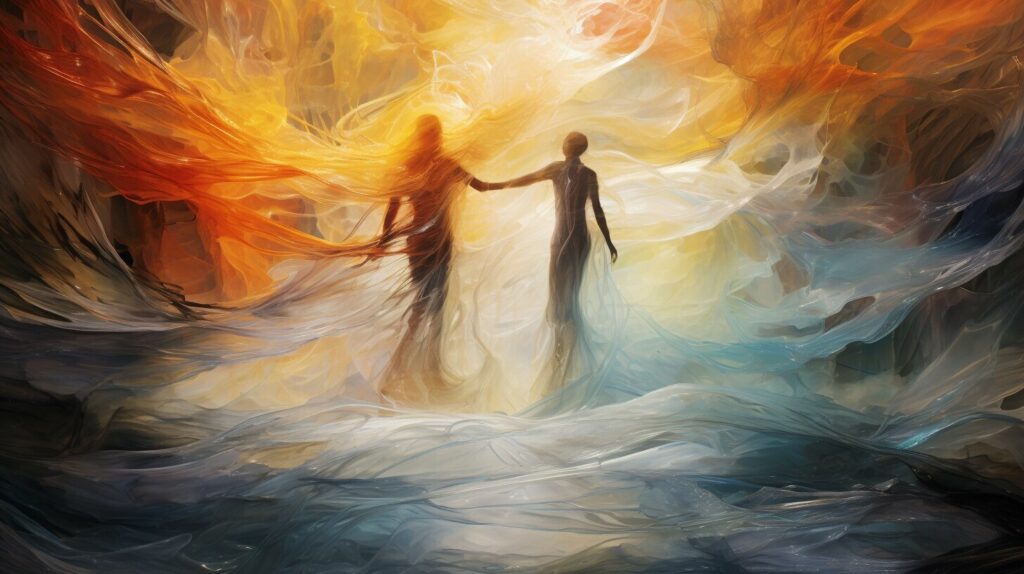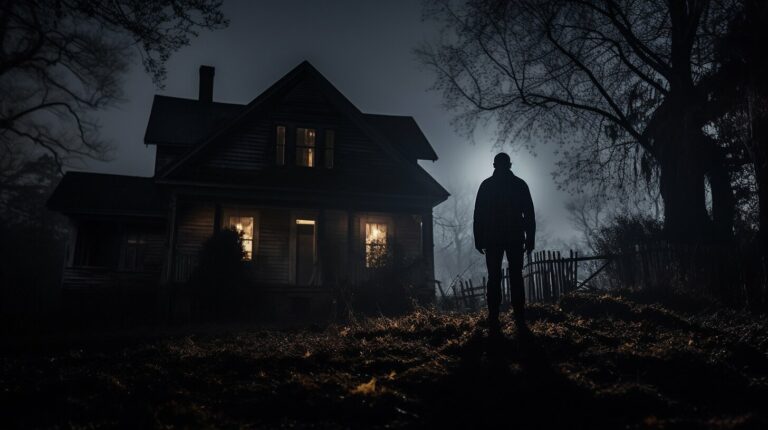*This post may contain affiliate links for which I earn commissions.*
Have you ever wondered if more than one person can share the same dream? In fact, can 3 people have the same dream?
You might be surprised to learn that there are reports of individuals who claim to have experienced the same dream alongside two or more other people.
In this article, we will explore the intriguing concept of shared dreaming. We will delve into the science behind it, examine anecdotal experiences, and discuss various theories and explanations put forth by experts.
So, buckle up and get ready for a fascinating journey into the world of shared dreams!
Key Takeaways:
- Multiple people claim to have shared the same dream
- Shared dreaming is a topic of scientific study and exploration
- Possible explanations for shared dreaming include telepathy and mutual symbolism
Mutual Dream Theory: Exploring the Possibility
Have you ever wondered if sharing the same dream with someone else is possible? The idea of dreaming with another person or experiencing the same dream on the same night may seem far-fetched, but it’s a concept that has fascinated people for centuries.
Despite lacking scientific evidence, many individuals claim to have shared dreams with others. These anecdotal experiences have sparked a growing interest in exploring the possibility of shared dreaming and its potential implications.
There are several theories and explanations put forth to explain shared dreams. Some experts suggest that the dreamers may have experienced similar events or emotions in waking life, leading to similar dream content.
Others propose that shared dreams may result from telepathic communication during sleep.
Regardless of the cause, the idea of sharing a dream with another person is intriguing. The possibility of a shared experience during a time when we are usually alone and disconnected from others is a fascinating concept to explore.

“The possibility of a shared experience during a time when we are usually alone and disconnected from others is a fascinating concept to explore.”
People Have The Same Dream – Experiences
Many people who claim to have shared dreams describe them as vivid, realistic, and emotionally intense. These dreams often involve shared themes, symbols, or events that both dreamers experience similarly.
For example, two people may dream about cheating on a test or flying over a particular landscape. These shared elements can provide a sense of connection and understanding between the dreamers, even if they don’t fully understand the meaning behind them.
Shared dreams can also occur between people who are close or have a deep connection, such as family members or romantic partners. Some individuals even report dreaming about the same person on the same night, suggesting a deeper level of connection or synchronicity.
Despite the subjective nature of shared dreams, they continue to fascinate and intrigue people worldwide. Whether you believe in their existence or not, the concept of sharing a dream with another person remains shrouded in mystery and wonder.
The Science of Shared Experiences
While mutual dreaming may seem far-fetched, some scientific evidence supports it. One theory is that during REM sleep, the brain is in a state of heightened activity and is more receptive to telepathic communication.
In this state, it’s possible that two people could share the same dream or communicate with each other through dreams.
Some researchers have also explored the idea of the collective unconscious, a term coined by psychologist Carl Jung. This theory suggests that all humans share a common pool of archetypes and symbols that are stored in the subconscious mind.
It’s possible that shared dreams could be a manifestation of this collective unconscious, with multiple individuals tapping into the same symbols and archetypes during their dream state.
However, it’s important to note that the scientific study of shared dreams is still in its early stages, and more research is needed to fully understand this phenomenon. While anecdotal evidence is compelling, it is not considered empirical evidence and cannot be used to prove the existence of shared dreams definitively.

“The scientific study of shared dreams is still in its early stages, and more research is needed to fully understand this phenomenon.”
Shared Dream Experiences: What People Say
Personal accounts of shared dreaming experiences are not uncommon. Many people claim to have dreamt with others, and the dreams are often vivid and detailed. According to the dreamers, the experiences feel as natural as waking life.
One individual reported dreaming about a trip to a foreign country with a close friend, only to find out the friend had the same dream the night before. The dreams were so realistic that they both remembered the exact details.
Another person claimed to have a shared dream experience with their significant other. They both dreamt about a trip they had planned, and the dreams were so similar that they were convinced they had dreamt together.
Sometimes, the dreams may not be entirely the same, but they share similarities. For example, two people may dream about being in the exact location or interacting with the same people. Dreamers often report feeling a strong emotional connection with the other person, even after waking up.

Shared dream experiences can be comforting for those who have them. It provides a sense of shared experience and a connection with another person that transcends waking life.
It’s not unusual for individuals who experience shared dreams to feel closer and more connected to the other person in their waking life.
Despite the many individual accounts of shared dreams, there is still a lack of scientific evidence to support the phenomenon. Skeptics argue that shared dream experiences could result from coincidence or the mind’s ability to create similar scenarios.
However, the experiences of those who have shared dreams remain compelling and intriguing.
Theories and Explanations: Making Sense of Shared Dreams
Shared dreams have long been a subject of fascination, and many theories have been proposed to explain this phenomenon. One theory suggests that shared dreams result from the concept of dream inception, where one person’s dream can influence another’s dream.
Another theory posits that shared dreams involve sharing archetypes, symbols, and themes common to the human experience.
Some experts also suggest that shared dreams may occur through telepathic communication, or individuals can communicate with each other through their subconscious minds. However, there is little empirical evidence to support this theory.
On the other hand, skeptics argue that shared dreams are simply coincidences that arise because many people often experience similar dreams due to shared cultural or environmental influences. For example, dreams about falling or being chased are everyday universal experiences.
Regardless of the explanation, shared dreams offer fascinating insights into the inner workings of the human mind and how we connect. As we continue exploring the science and psychology of dreams, we may uncover even more intriguing theories about shared dreams and their potential.

Mutual Dreaming: A Closer Look
If you’re interested in shared dreaming, you may have heard about the concept of mutual dreaming. This involves two or more individuals actively attempting to experience the same dream.
While this may seem like a fantastical idea, people use many techniques to increase the chances of having a shared dream with a specific person.
One popular technique is to synchronize your sleep schedule with your dream partner. This involves going to bed simultaneously and intending to dream together before falling asleep. Some people also suggest writing down your dreams or sharing them with your partner as a way to increase the likelihood of having a shared dream.
Another technique is focusing on a specific dream symbol or scenario before bed. If you and your dream partner have a shared interest in a particular subject or activity, focusing on that before sleeping could increase the chances of having a shared dream about it.
Some people also suggest using meditation or visualization techniques to connect with your dream partner before falling asleep. This could involve visualizing a shared dream scenario or simply focusing on your intention to dream together.

While not everyone can achieve a mutual dream experience, those who have done so often report a deep connection and bonding with their dream partner. The mutual dream experience can also provide valuable insights into the nature of dreams and the potential for subconscious communication.
Case Studies: Examining Shared Dream Examples
Shared dreams are a fascinating phenomenon that has captured the attention of many individuals. While the concept of shared dreaming may seem far-fetched, numerous reports and personal accounts suggest it is a real experience.
Here are some case studies of specific instances where two or more individuals claim to have shared the same dream:
| Dream-Theme | Shared Experience |
|---|---|
| Dream about Cheating | Two close friends claimed to have shared a dream where they were both cheating on a significant other. They described the same setting, actions, and emotions in their respective dreams. |
| Two People Dream About Similar Events | Two sisters reported having dreams about a family member’s illness on the same night. The dreams differed but shared many similarities regarding the setting, details, and emotions. |
| Exact Same Dream | A couple claimed to have shared the same dream where they were exploring a mysterious, new city. They described the same landmarks, people, and events in their respective dreams. |
These case studies provide compelling evidence that shared dreams are more than coincidences. They suggest that there may be a deeper connection between individuals during the dream state that is not fully understood.
The following section will explore the significance and implications of shared dreams.

The Significance of Shared Dreams
Shared dreams are a unique and powerful experience that can be significant for those who experience them. These shared experiences can strengthen relationships, foster a sense of connection, and provide valuable insights into the dreamers’ waking lives.
When you share a dream with another person, you have a shared experience that can bring you closer together. It can be a bonding experience that deepens your relationship and strengthens your connection. The sense of connection and understanding that comes from sharing a dream can be challenging to replicate in any other way.
Shared dreams can also provide valuable insights into the dreamers’ waking lives. Dreams are often rooted in the subconscious mind and can reveal underlying thoughts, emotions, and issues. When two or more individuals share the same dream, it can offer a unique perspective on these underlying issues and provide a new level of understanding.
Additionally, shared dreams can have a significant psychological and emotional impact. They can offer a sense of validation and reassurance and a feeling of being seen and heard. For many, shared dreams can be a source of comfort and support.
Overall, shared dreams are a fascinating and meaningful experience that can offer deep insights into the human psyche. They have the potential to foster connections, offer valuable insights, and provide comfort and support.

Debunking: Are Shared Dreams Just Coincidences?
While the idea of shared dreaming may seem far-fetched to some, others believe it to be a genuine phenomenon. However, some remain skeptical and suggest that shared dreams are nothing more than coincidences.
One possible explanation for shared dreams is that they occur due to similarities in their content and the dream state. When two people have similar dreams on the same night, it may be because they are both experiencing similar emotions, thoughts, or experiences in their waking lives.
This can create a shared dream state that resembles someone else’s dream, leading to the perception of a shared dream.
It’s also possible that some shared dreams are simply coincidences. With so many people dreaming each night, it’s not unlikely that two people could have a dream with some similar elements. This doesn’t necessarily mean that the two dreams are connected or that telepathic communication is occurring.
While there is no concrete evidence to prove or disprove the existence of shared dreams, it’s important to remain open-minded and consider all possibilities. Whether or not shared dreams are real, they can still hold significant meaning and provide insights into the dreamer’s subconscious mind and waking life.

Exploring the Limits: How Many People Can Share a Dream?
The concept of shared dreaming raises the question of how many people can share the same dream. While there have been instances of two or more people sharing a dream, it remains unclear whether a maximum number of individuals can experience the same dream.
Research suggests shared dreaming is most common between two people, with reports of entire groups sharing dreams being rare. However, anecdotal evidence suggests that larger groups may be able to share partially overlapping dreams, with individuals experiencing different aspects of the same dream or having similar dreams on the same night.
| Number of People | Shared Dream Experience |
|---|---|
| Two or Three | Same dream |
| More than Three | Partially overlapping dreams, similar dreams on the same night |
It is important to note that the potential for multiple individuals to share the same dream may depend on various factors, such as their level of familiarity with each other, their level of emotional connection, and their ability to communicate telepathically during dreams.
There is no definitive answer to the question of how many people can share a dream. However, the intriguing possibility of multiple individuals experiencing the same dream highlights the mysterious and fascinating nature of the dream world.

The Fascinating World of Shared Dreams
After exploring the science, experiences, and theories behind shared dreams, it is clear that this phenomenon is an intriguing and mysterious aspect of human consciousness.
Shared dreams have been reported throughout history and across cultures, and they continue to captivate the imagination of dreamers and researchers alike.
While there is still much to learn about shared dreaming, it is evident that these experiences can provide unique insights into the connections between individuals and the workings of the subconscious mind.
Shared dreams can foster a sense of intimacy and shared experiences that can strengthen relationships and provide a deeper understanding of ourselves and those around us.
Whether you have personally experienced a shared dream or find the concept fascinating, there is no denying the allure of this mysterious phenomenon.
The world of shared dreams is ripe for further exploration and research, and it is exciting to contemplate the possibilities that lie ahead as we continue to unravel the mysteries of the human mind.
FAQ
Q: Can 3 People Have the Same Dream?
A: There have been reports of multiple people experiencing the same dream.
Q: What is shared dreaming?
A: Shared dreaming refers to the possibility of multiple individuals experiencing the same dream.
Q: Is there any scientific study on shared dreams?
A: Research has been conducted on shared dreams, exploring the subconscious mind and potential telepathic communication.
Q: What do people say about their shared dream experiences?
A: Individuals who claim to have shared dreams describe vivid and realistic experiences.
Q: Are there any theories to explain shared dreams?
A: Experts have proposed theories such as dream inception, symbolism, and archetypes to make sense of shared dreams.
Q: What is mutual dreaming?
A: Mutual dreaming is when two or more individuals actively attempt to share dreams and find dream partners.
Q: Are there any examples of shared dreams in case studies?
A: Case studies present instances where two or more individuals claimed to have shared the same dream.
Q: What is the significance of shared dreams?
A: Shared dreams can strengthen relationships, provide insights into waking life, and understand the root of most dreams.
Q: Are shared dreams just coincidences?
A: Some skeptics propose that shared dreams could coincide or resemble someone else’s dream state.
Q: How many people can share a dream?
A: The limits and boundaries of shared dreaming are still being explored, including whether more than three people can share the same dream.







